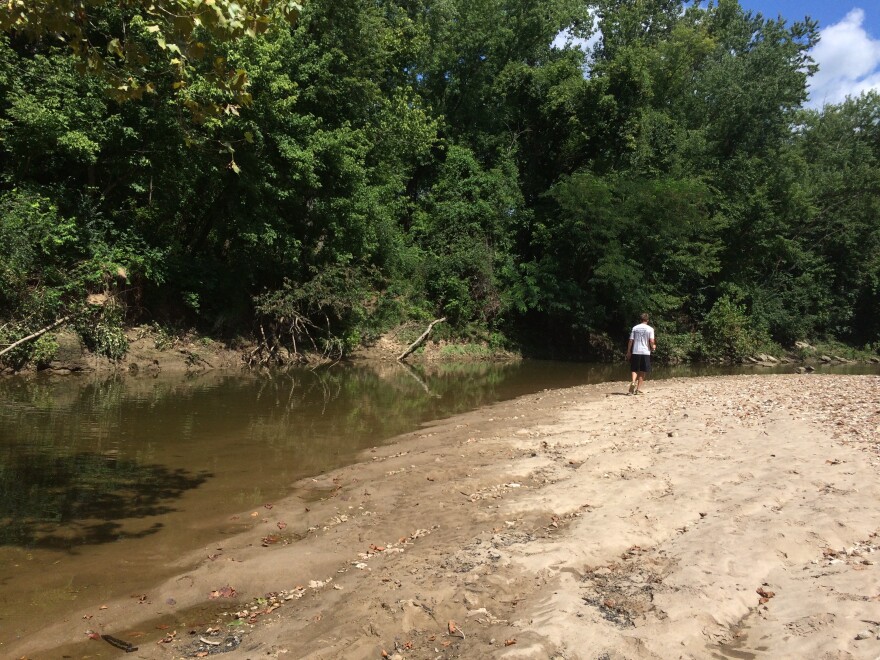Hinkson Creek, which runs through Columbia, might not seem like an ideal destination for anglers. While it carries some standard game fish like bass and blue gill, you’re not likely to find any record catches.
But on a recent late-Summer day, Michael Moore was after fish on the opposite end of the spectrum.
A doctoral student in fisheries conservation at the University of Missouri, Moore was turning over rocks in the creek, looking for tiny aquatic bugs to use for bait.
After gathering a half-dozen in a small lure box, he put one on a tiny hook, and dangled it in the water until he got a bite: a miniscule blue gill.
This is micro fishing.
"It’s literally you’re trying to catch the smallest fish possible, in this and that’s kind of the added challenge I guess," Moore said.

Instead trying to catch the biggest fish, micro fishers try to catch the biggest number of species. In lieu of bass, or catfish or trout, microfishers look for mummichogs, creek chubs, shiners, and countless other species they can add to their “life list” – a list of all the species they’ve caught.
"Some people have like 400 species on their list and they’re adding to it all the time."
Ben Cantrell, a micro fishing enthusiast in Peoria, Illinois, has hundreds of species on his life list.
"Several people have compared this to getting your drug fix," Cantrell said. "It’s like, gosh I’ve gone a few months and haven’t caught a new species. So you plan out a road trip, you know, and maybe drive six hours away because there’s some species you know it’s there. And I’m sure the birding community’s gotta be the same."
Cantrell helps run the website microfishing.com and its associated Facebook page.
"People can engage with the page and with the group. People from all over the world are posting up photos of the small fish they’re catching," he said.
The highly-specialized hobby still doesn’t have a sizeable following, at least not in the U.S.

"A lot of people think it’s ridiculous. There’s really not too many people doing this sport right now. Maybe one or two people in each state," Cantrell said.
And Missouri turns out to be a pretty ideal destination for microfishing, mainly due to the diversity of the state’s waterways.
Cantrell explained, "You have several different drainages that are flowing in different directions. The Missouri river flows straight over to the Mississippi, and then all the rivers on the southern part of the state flow south, and there’s different fish in each river you go to."
But he said one of the appeals of micro fishing is you don’t need a major waterway or body of water to do it.
"We’ll fish any body of water, there can be a roadside ditch that just has some water in it from some recent rains and we’ll be in there looking for fish. You get people stopping their cars and like, ‘what on earth is that guy doing?’"

Recognizing the diversity and complexity of aquatic ecosystems is one reason micro fishing attracts so many naturalists and conservationists. Traditional sport fishing focuses on a handful of larger fish, but it’s the intricate web of smaller fish and fauna that support those game fish.
Cantrell said, "When you start looking at every species, then you realize that the average state has 100-200 even 300 species and each one has its own niche in the ecosystem, you start caring about it more and start getting paired up with people that are doing conservation work."
That ecological side of the hobby is the appeal for Moore.
"It’s just a cool thing to get out and kind of observe like how they feed and their behavior," Moore said.



